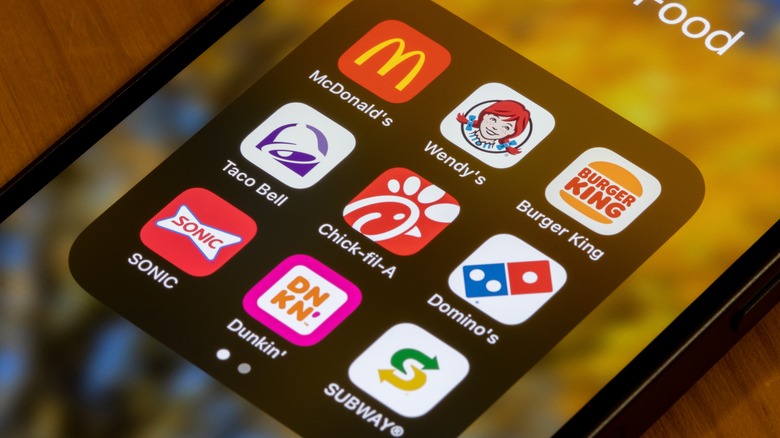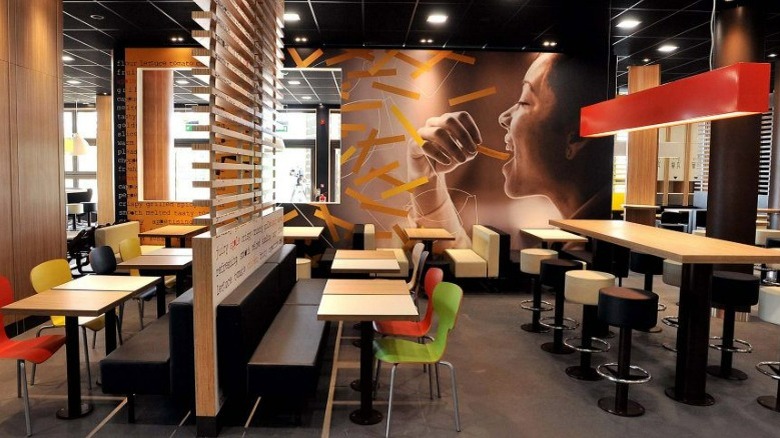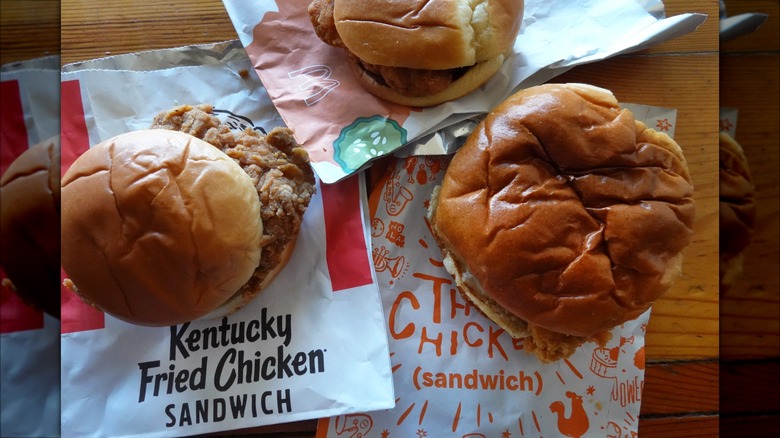When Did Fast Food Restaurants All Start To Look And Feel The Same?
Here's an experiment for you: List all the things that make McDonald's and Burger King different. Take a trip to your local Mickey D's or BK to take some notes. Okay, sure, the logos are different. Each restaurant was founded by various, respective people at various, respective times. Each chain has a (technically) unique mascot. But past all the fancy marketing and media-generated hype, aren't McDonald's and Burger King the exact same franchise, just with a different paint job? When it comes down to it, both of them sell burgers and fries, so what's really the difference, if any, between them?
As you may have noticed — and as this article has thus far obviously intoned — many fast-food places seem to feel the same now. Dining rooms feel the same, most of them sell the same food, and even their advertisements feel like rehashed copies of the other. It's a feeling of homogeneity, that feeling of "sameness" in everything. In a 2018 City Journal article about gentrification, writer Oriana Schwindt describes the "unbearable sameness of cities," noting how most major American cities feel so uncannily similar to each other. If American metropolises can feel exactly the same, why shouldn't fast-food restaurants follow the same trend of monotony?
In that sense, what caused fast-food restaurants — once known for their bright, colorful exteriors, zany mascots, and unique styles of architecture — to err on the side of unassuming conformity? What caused the beloved American industry of hamburgers sold by clowns or red-roofed pizza joints to adopt such a relatively bland, "safe" mindset?
Are fast food chains shedding their own unique identities?
Whether it was Ronald McDonald advertising PlayPlaces or Taco Bell decorated in the radical Memphis Group design, fast food restaurants looked much more different a decade or two ago. But today, these colorful, quirky designs have been traded for more modern, contemporary aesthetics. The world of bright colors and corporate mascots has been replaced by a more sterile environment, such as exposed lighting and steel surfaces. While these design elements do grant a sleeker, more professional look, it removes the character — the oddly compelling charm of these restaurants that made them stand out.
Though some credit the rise of fast-casual restaurants like Panera for this change in aesthetic, others point to both the changing tastes and attitudes of a new generation and a renewed focus on service and efficiency. Restaurant consultant John Gordon explained to CNN Business that the "boxy" models of fast-food restaurants are not only cheaper to maintain, but are easier to heat and cool. The advent of delivery and mobile ordering, no doubt increased dramatically by the COVID-19 pandemic, also meant that fast-food restaurants no longer had to focus on attracting customers into their dining rooms as much as they used to.
For some, this change has led to a particular sense of loss. "I don't know if you'd be able to identify what they were if they had a different name on the front," laments urbanist writer Addison Del Mastro to CNN Business. "There's nothing to engage the wandering imagination."
Many fast-food restaurants serve the same thing
Is a bit of competition anything new for fast food? Certainly not. If the classic "burger wars" of the 1980s between McDonald's and Burger King are any indication, fast-food restaurants of all types will always try to "one-up" the other. But by trying to capitalize on the newest item, such as one particular product, the market becomes cluttered with banality and prevents the exploration of new ideas. It also moves these companies from focusing on what they're truly good at and instead homing in on something their restaurants never specialized in to begin with.
Take, for example, the infamous "chicken sandwich wars." While Popeyes is commonly believed to have started the war in 2019 by introducing its chicken sandwich to the menu, who really started the war matters little today. Chicken sandwiches flooded the market, saturating fast-food menu boards and television advertisements, each company loudly and boldly announcing that they and they alone had the best chicken sandwich on the market. McDonald's found itself slinging chicken sandwiches just as KFC did, Wendy's now had a chicken sandwich that could compete against Chick-fil-A, and Burger King and Popeyes fought for airtime to contest each other's chicken sandwiches — and they're owned by the same company!
One can define this type of market as "monopolistic competition," or competing against each other through offering variations on the same product. In this case, these restaurants try to out-sell each other by offering the same product with minor tweaks — whether it's the design of their locations or the products they offer.


